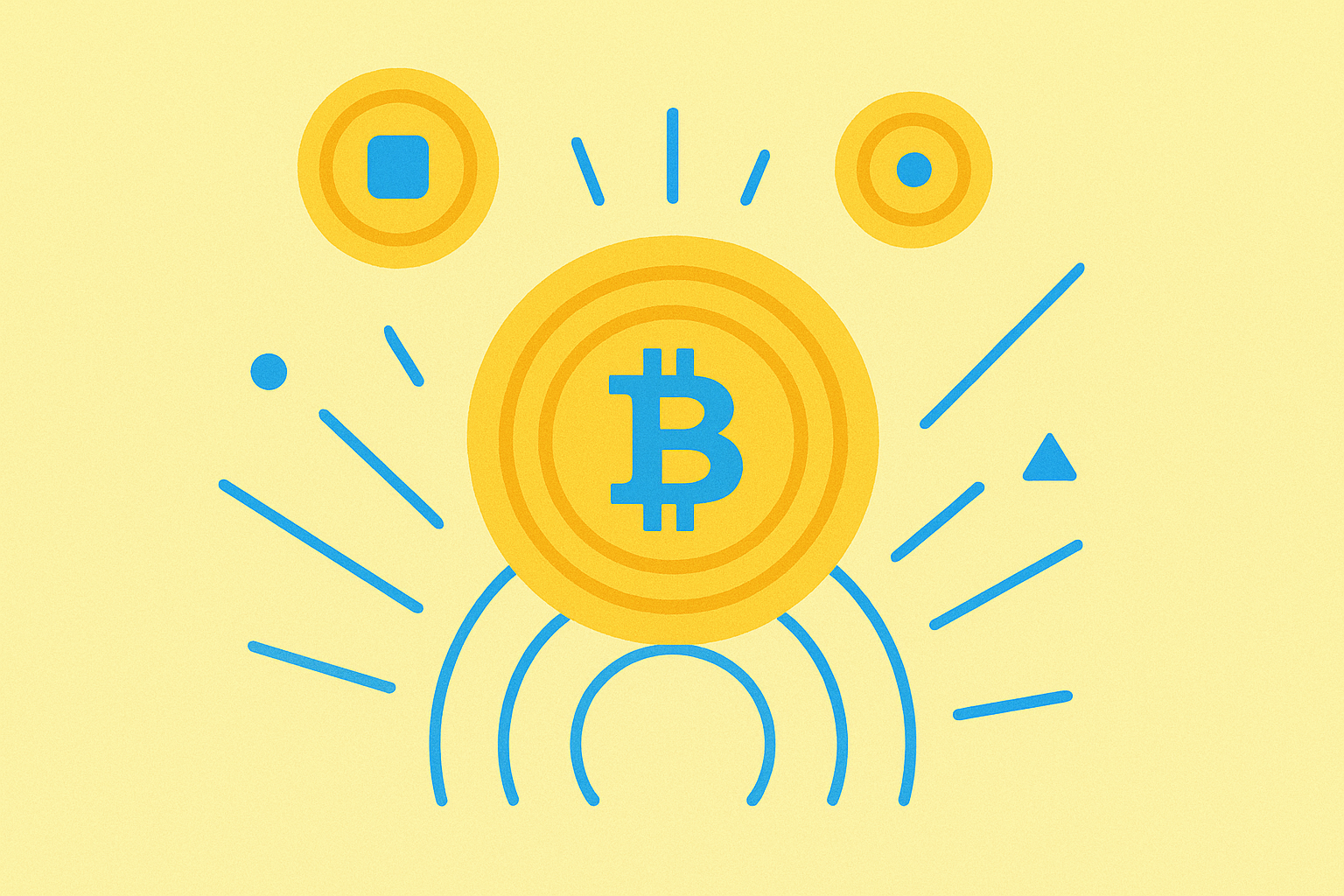x402, AP2 ve ERC-8004 Nedir? AI Ajan Ödeme Protokolleri Rehberi

x402'yi Anlamak: AI Ajan Ödemeleri için Kesim Noktası Protokolü
x402 protokolü, Coinbase tarafından geliştirilmiş ve Mayıs 2025'te piyasaya sürülmüş olan AI ajanı ödeme protokollerinde önemli bir atılımı temsil ediyor. x402'nin temelinde, daha önce yeterince kullanılmayan HTTP durum kodu 402 "Ödeme Gerekli"nin yeniden canlandırılması yatıyor; bu, web altyapısı aracılığıyla kesintisiz mikro ödemeleri, stablecoin transferlerini ve otonom makineden makineye işlemleri mümkün kılıyor. Bu yenilikçi yaklaşım, işlem yeteneklerini doğrudan HTTP etkileşimlerine entegre ederek geleneksel ödeme engellerini ortadan kaldırıyor - devrim niteliğinde bir kavram.Web3geliştiriciler ve blok zinciri meraklıları.
Protokol mimarisi, geliştiricilerin, API sağlayıcılarının, AI ajanlarının ve içerik oluşturucularının, eski faturalama sistemlerine bağımlı olmadan sunumlarını para kazanmasını sağlamak için özellikle yeni AI ekonomisi için tasarlanmıştır. Bir AI ajanı, ücretli kaynaklara veya hizmetlere erişim talep ettiğinde, x402 protokolü, ayrı ödeme portalları, kullanıcı hesapları veya API anahtar düzenlemeleri gerektirmeden, anında işlem yapmayı kolaylaştırır. Bu sürtünmesiz kaydolma, AI sistemlerinin dijital ekonomilerle etkileşim biçiminde bir paradigma kayması temsil eder; çünkü ödeme, bir kimlik doğrulama biçimi haline gelir - gerekli miktar ödendiğinde, AI ajanı talep edilen kaynağa yetkili erişim kazanır.
x402 protokolünün teknik belgelerde açıklanan özellikle etkileyici bir özelliği, ekonomik olarak uygun mikro işlemleri desteklemesidir. Protokol, işlemlere centin kesirleri kadar küçük ödemelere olanak tanır, bu da onu blockchain ekosistemlerinde yüksek frekanslı, düşük değerli AI ajan işlemleri için ideal hale getirir. Bu yetenek, AI sistemlerinin insan müdahalesi olmaksızın diğer ajanlardan hesaplama kaynakları, veri veya özel hizmetler satın alabilmesi için tamamen yeni iş modelleri açar. Mimarisine entegre edilmiş anlık uzlaşma ile hizmet sağlayıcıları derhal ödeme alır, bu da nakit akış dinamiklerini önemli ölçüde iyileştirir ve gecikmeli uzlaşmalarla ilişkili finansal riskleri azaltır.
AP2'yi Anlamak: Google'ın Oyun Değiştiren Ajan Ödeme Protokolü
Google'un Ajans Ödeme Protokolü (AP2), finansal işlemler gerçekleştiren AI ajansları arasında güvenli ve şeffaf etkileşimler kurmayı hedefleyen kapsamlı bir çerçeve olarak öne çıkmaktadır. Diğer AI ajansı ödeme yaklaşımlarının aksine, AP2, çeşitli ödeme ortamlarında güvenliği ve esnekliği öncelikli kılan, ödeme yönteminden bağımsız, birlikte çalışabilir bir çözüm olarak işlev görmektedir. Büyük teknoloji ve finans kuruluşlarıyla işbirliği içinde geliştirilmiş olan AP2, bağımsız AI ajanslarının güçlü yönetişim kontrolleri ile işlemleri gerçekleştirmesi için yapılandırılmış bir temel oluşturur.
Protokolün temel mimarisi, AI ajanlarının güvenli bir şekilde ödeme yapabilmesi için gerekli güven mekanizmalarını öncelikli hale getirirken, geleneksel fiat ve yeni gelişen kripto para sistemleri dahil olmak üzere çeşitli ödeme yöntemleriyle uyumlu kalmayı sağlıyor. AP2'nin diğer protokollerle olan ilişkisi özellikle dikkate değerdir - x402 gibi çözümlerle rekabet etmek yerine, uzmanlaşmış ödeme protokollerinin çalışabileceği kapsamlı güvenlik çerçevesini sağlayarak onları tamamlar. Bu tasarım felsefesi, Google'ın blockchain ve geleneksel ödeme sistemlerinde AI ajanı işlemlerinin optimal şekilde çalışabilmesi için farklı soyutlama seviyeleri gerektirdiğini kabul ettiğini yansıtıyor.
AP2'nin Web3 ödemelerine yaptığı en önemli katkılardan biri, kurumsal düzeyde yönetişim ve denetim yeteneklerine verdiği önceliktir. AP2'yi uygulayan kuruluşlar, AI ajanı ödeme faaliyetlerine kapsamlı bir görünürlük kazanarak sağlam risk yönetimi ve düzenleyici uyum sağlama imkanı elde ederler. Bu özellikler, sıkı finansal kontrolleri sürdürürken AI otomasyon fırsatlarını keşfetmesi gereken büyük işletmeler için AP2'yi özellikle cazip hale getiriyor. Protokolün büyük kurumsal ortaklar tarafından benimsenmesi, onu bağımsız bir çözüm yerine, ortaya çıkan ajans ticareti yığını içinde bir altyapı katmanı olarak stratejik bir konumda gösteriyor; bu da işletmelerin belirli kullanım durumlarını ele almak için birden fazla tamamlayıcı protokol uygularken birleşik yönetişimi sürdürmelerine olanak tanıyor.
ERC-8004: AI Ajanları için Blockchain İşlemlerini Devrim Niteliğinde Yenilemek
ERC-8004 standardı, blok zinciri ekosistemlerinde faaliyet gösteren AI ajanları için standart kimlik ve kimlik doğrulama mekanizmaları oluşturma konusunda temel bir atılımı temsil etmektedir. Özel bir Ethereum Yorum Talebi teklifi olarak, ERC-8004, blok zinciri işlemleri sırasında AI ajanlarının kimliklerini doğrulamanın kritik zorluğunu ele almaktadır - bu, otomatik sistemler arasında güvenli ve güvenilir etkileşimler için bir ön koşuldur. Bu standart, AI ajanlarını doğrulanabilir kimlik bilgileri ve işlem geçmişleri ile blok zinciri varlıkları olarak temsil etmek için tutarlı bir çerçeve oluşturur.
ERC-8004'ün teknik uygulaması, Ethereum'nin akıllı sözleşme yetenekleri, itibar ölçümleri ve yetkilendirme parametreleri ile birlikte AI sistemleri için kalıcı zincir içi kimlikler oluşturmak için. Bu yaklaşım, AI ajansı ödeme alanındaki kritik bir sorunu çözüyor: otomatik sistemler arasında insan aracılar olmadan güven tesis etmek. Kimlik doğrulama, belgelendirme yönetimi ve yetkilendirme iş akışları için standartlaştırılmış yöntemler sağlayarak, ERC-8004, karmaşık finansal işlemleri minimum sürtünme ile gerçekleştirmek için sofistike çoklu ajans sistemlerine olanak tanır. Standardın mevcut Ethereum altyapısıyla entegrasyonu, AI ajanlarının kurulu DeFi protokolleri ile etkileşimde bulunmasına olanak tanıyarak daha geniş merkeziyetsiz finans ekosistemi ile uyumluluğu garanti eder.
Basit ödemelerin ötesinde, ERC-8004 standart kılavuz belgeleri, AI ajanlarının tanımlanmış hizmet seviyesi anlaşmaları, koşullu ödemeler ve otomatik ihtilaf çözüm mekanizmaları ile karmaşık sözleşmeli ilişkiler kurma yöntemlerini göstermektedir. Bu yetenekler, AI ajanı etkileşimlerini basit işlemlerden şeffaf, programlanabilir mantıkla yönetilen karmaşık iş ilişkilerine dönüştürmektedir. Standardın büyük blockchain projeleri tarafından benimsenmesi, AI sistemlerinin merkeziyetsiz piyasalara özerk bir şekilde katılabileceği, özel hizmetler sunabileceği ve doğrudan insan gözetimi olmadan kaynak biriktirebileceği makine destekli bir ekonominin teknik temelinin inşasında önemli bir rol oynadığını göstermektedir.
Web3 Ödeme Protokollerinin Karşılaştırması: x402 vs AP2 vs ERC-8004
Web3 ödeme protokollerinin karşılaştırması, AI ajan ödemelerini sağlama konusunda farklı yaklaşımlar ortaya koyarak, her çözümün gelişen makine ekonomisinin farklı yönlerini ele aldığını gösteriyor:
| Protokol | Ana Odak | Ana Güçler | İdeal Kullanım Alanları | Teknik Mimari |
|---|---|---|---|---|
| x402 | Web'e özgü mikro ödemeler | Anında çözüm, sorunsuz kaydolma, HTTP entegrasyonu | API erişim pazarları, içerik para kazanma, yüksek frekanslı mikro hizmetler | HTTP 402 durum kodu uygulaması ile kripto ödeme doğrulaması |
| AP2 | Güvenli işlem çerçevesi | Ödeme yöntemi kayıtsızlığı, kurumsal yönetişim, birlikte çalışabilirlik | Kurumsal AI dağıtımları, düzenlemelere tabi sektörler, çoklu platform sistemleri | Kimlik doğrulama, yetkilendirme ve denetim yeteneklerine sahip protokol katmanı |
| ERC-8004 | Yapay zeka ajan kimliği | Zincir üzerinde doğrulama, itibar sistemleri, akıllı sözleşme entegrasyonu | Karmaşık çok ajanlı sistemler, merkeziyetsiz otonom organizasyonlar | Kimlik kaydı ve kimlik doğrulama işlemleri ile Ethereum standardı |
Bu protokoller, yalnızca ayrı ayrı uygulanmak yerine birlikte uygulandıklarında en etkili şekilde çalışır. Örneğin, AI ajanları dağıtan bir işletme, yönetim kontrolleri için AP2'yi kullanırken, ERC-8004'ü zincir üzerindeki kimlik yönetimi için ve x402'yi belirli mikro ödeme senaryoları için kullanabilir. Gate kullanıcıları, bu entegre yaklaşım sayesinde özellikle fayda sağlamışlardır; platformun bu protokolleri desteklemesi, yenilikçi ticaret stratejileri ve güvenli AI ajan etkileşimleri aracılığıyla otomatik portföy yönetimi sağlamaktadır.
Bu protokollerin tamamlayıcı doğası, özel çözümlerin Web3 ödeme ekosistemi içindeki farklı gereksinimleri nasıl karşıladığını göstermektedir. As blok zinciriteknoloji ve AI yetenekleri ilerlemeye devam ederken, bu temel protokoller, otonom ajanların değer, hizmet ve dijital varlıkları geleneksel finansal aracı kurumlar olmadan güvenli bir şekilde değiştirebileceği sofistike AI ekonomileri için gerekli altyapıyı oluşturur.

x402 nedir? Protokol Yorumlamasını Anlamak

LIORA vs ETH: Yapay Zeka Entegrasyonu Döneminde Blockchain Alanında Üstünlük Yarışı

GROK nedir: Elon Musk’ın Yeni Yapay Zeka Sohbet Botu ve Teknoloji Sektörüne Olası Etkileri

PING Projesi: X402 Protokolü ile Yapay Zeka Tabanlı Ödeme Otomasyonuna Çözüm Sunuyor

Binance Launchpool’da KITE Token: Yapay Zeka Tabanlı Ödeme Ekosistemine Erken Erişim

KITE Token Lansmanı: AI Payment Blockchain, Otonom Ajan Ekonomisinin Temelini Oluşturacak

Kripto Piyasa Güncellemesi: XRP, Bitcoin'in toparlanmasıyla beraber yükselişe geçti

2025 yılında Elon Musk’ın portföyünde hangi kripto paralar yer alıyor?

Kripto Para Cüzdanları Hakkında Her Şey: Detaylı Bir Kılavuz







